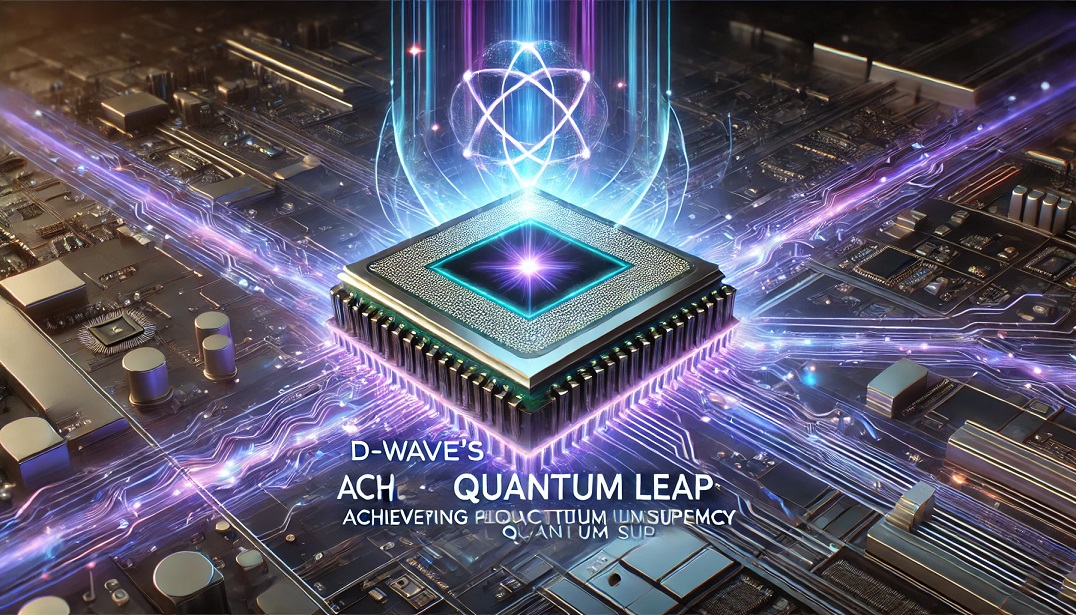Short Description: Snowcap Compute, a San Francisco–based startup, has raised $23 million to develop energy-efficient superconducting AI chips. These chips aim to outperform traditional silicon-based systems while drastically reducing power usage. The company now includes a former Intel CEO on its board.
🧠 The Future of AI Processing Just Got Cooler — Literally
In a significant leap toward transforming AI infrastructure, Snowcap Compute, a San Francisco–based startup, has raised an impressive $23 million in a new round of funding. But this isn’t just another AI chip announcement. This bold venture is rooted in superconducting technology, a field that has been waiting patiently for its time to shine. And that time, it seems, is now.
Superconducting chips are not new in theory, but their practical deployment at scale has remained elusive for decades. What makes Snowcap Compute stand out is not just the capital it has raised but the confidence of big names backing this project—including Pat Gelsinger, former CEO of Intel, who now joins Snowcap’s board. This isn't hype. It’s the reshaping of computing physics for real-world applications in artificial intelligence.
❄️ What Makes Superconducting Chips So Revolutionary?
Let’s break it down. Traditional chips, no matter how advanced, generate heat. A lot of it. When you’re running complex machine learning models or powering AI assistants with billions of parameters, heat becomes your enemy. Superconductors solve this by conducting electricity without resistance, meaning no energy loss and zero heat generation.
However, they need to be kept at ultra-low temperatures—typically close to absolute zero—which historically has made them expensive and impractical. But with AI models devouring energy like never before, especially in hyperscale data centers, Snowcap Compute believes the benefits outweigh the challenges.
Their chips, even after factoring in cooling requirements, claim to be 25 times more energy efficient than current state-of-the-art silicon GPUs. That’s not just an upgrade—it’s a paradigm shift.
💡 A Burning Problem: Power Limits in AI Infrastructure
The timing could not be better. Current data center infrastructure is approaching its electrical limits. With AI models scaling every quarter and the compute needs doubling with every advancement, companies are hitting a hard ceiling on how much they can power their servers.
Nvidia’s upcoming “Rubin Ultra” server system, for instance, is rumored to draw over 600 kilowatts. That’s roughly equivalent to what 400 average homes use per month. If you imagine hundreds of these machines deployed globally, the math stops making sense fast.
This is the tipping point. This is the pressure cooker that’s making investors, engineers, and AI companies finally consider unconventional computing architectures—and Snowcap Compute is right at the heart of it.
🌍 The Brains Behind the Breakthrough
Snowcap Compute isn’t just a hopeful dreamer startup. It’s composed of scientists, hardware engineers, and AI veterans who know exactly what they’re doing. The co-founders, Anna Herr and Quentin Herr, bring decades of superconducting and cryogenic hardware experience. They’ve worked in some of the most demanding technical environments at Northrop Grumman and Imec.
Complementing them is CEO Michael Lafferty, whose roots in Cadence Design Systems give him the industry insight and leadership muscle needed to make superconducting chips not just a lab experiment—but a commercial reality.
Joining the board is Pat Gelsinger, a name that carries weight not just because of his Intel leadership but because of his deep understanding of what makes hardware succeed in a market as volatile and demanding as AI.
🧪 The Technology: Niobium Titanium Nitride
Snowcap’s chips use niobium titanium nitride, a superconducting material known for its stability and performance under cryogenic conditions. This material isn’t easy to source or fabricate, which adds a layer of supply chain complexity—but it’s key to making these chips work as promised.
It’s sourced from specific regions like Brazil and Canada, and while fabrication does use standard chip manufacturing equipment, the precision required for superconducting behavior is far beyond traditional silicon standards.
Yet the promise is immense. Once operational, these chips won’t just outperform traditional silicon—they’ll do so with a fraction of the energy use.
📈 What the $23M Funding Means
This round, led by Playground Global, with participation from Cambium Capital and Vsquared Ventures, is about more than just capital. It signals belief in the future of superconducting computing. The money will go toward finalizing chip prototypes, expanding the engineering team, and preparing for commercial deployment.
Snowcap plans to ship its first working prototypes by late 2026, with scalable systems following soon after. While some may say that’s a long wait, industry experts argue it’s nothing in the timeline of fundamental technology shifts. After all, the first silicon transistor was created in 1947—but it took nearly 20 years to become mainstream. Snowcap’s roadmap is blazing fast by comparison.
📊 A New Metric: Performance Per Watt
In an industry that has long measured success by raw compute power, the conversation is now shifting to performance per watt. Companies, from startups to hyperscalers, are realizing they simply can’t scale their compute needs without reimagining how energy is consumed.
That’s where Snowcap Compute shines. Their chips, designed from the ground up for energy efficiency, promise to keep pace with AI demands without sending electricity bills skyrocketing. It’s about sustainable scaling, not just faster models.
🔍 Why It Matters for Everyone in Tech
This isn’t just a chip story. It’s a climate story. It’s a business efficiency story. It’s about the survival of the AI revolution. Because no matter how smart your model is, if you can’t power it—it's useless.
Superconducting AI chips are no longer science fiction. With this funding, the people, and now the momentum behind Snowcap, it’s a tangible, testable reality.
If successful, this could mark a historical shift in computing—akin to when we moved from vacuum tubes to transistors, or from CPUs to GPUs.
✍️ Final Thoughts — This Isn't Just Innovation, It's Necessity
Snowcap Compute’s $23 million raise is not just a signal of investor confidence—it’s a signal that the tech world is ready for bold hardware reimagination. As AI continues to grow exponentially, the tools we use to support it must evolve too. Superconducting chips, despite their cooling needs, may be the only scalable way forward.
In a landscape where everyone is focused on AI models, Snowcap is focused on the foundation that powers them. And that makes them a company worth watching, funding, and maybe even partnering with.
🔑 Summary for Your Blog Readers
Snowcap Compute is developing superconducting AI chips that offer 25× better energy efficiency, backed by $23 million in fresh funding, and guided by former Intel CEO Pat Gelsinger. With a prototype expected by late 2026, this could be a defining moment in the shift away from energy-hungry silicon chips.
















Comments 0